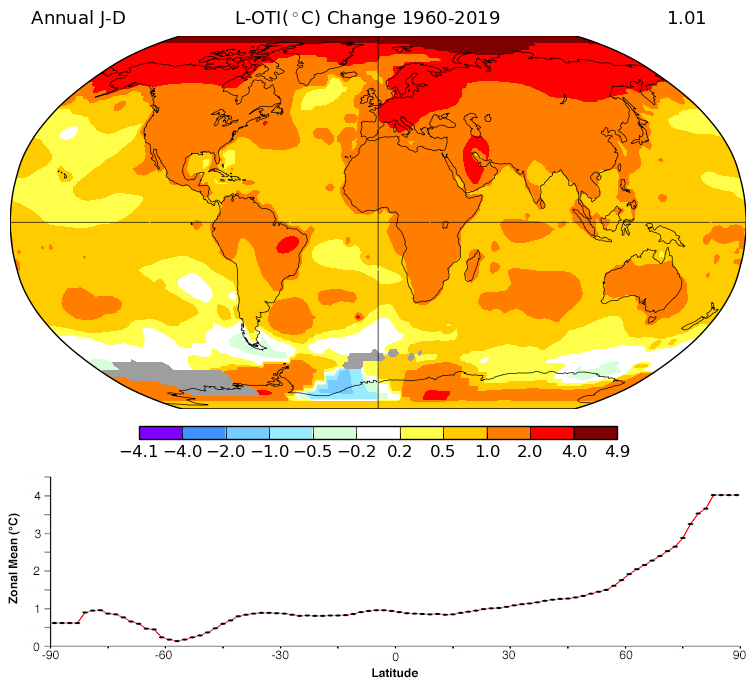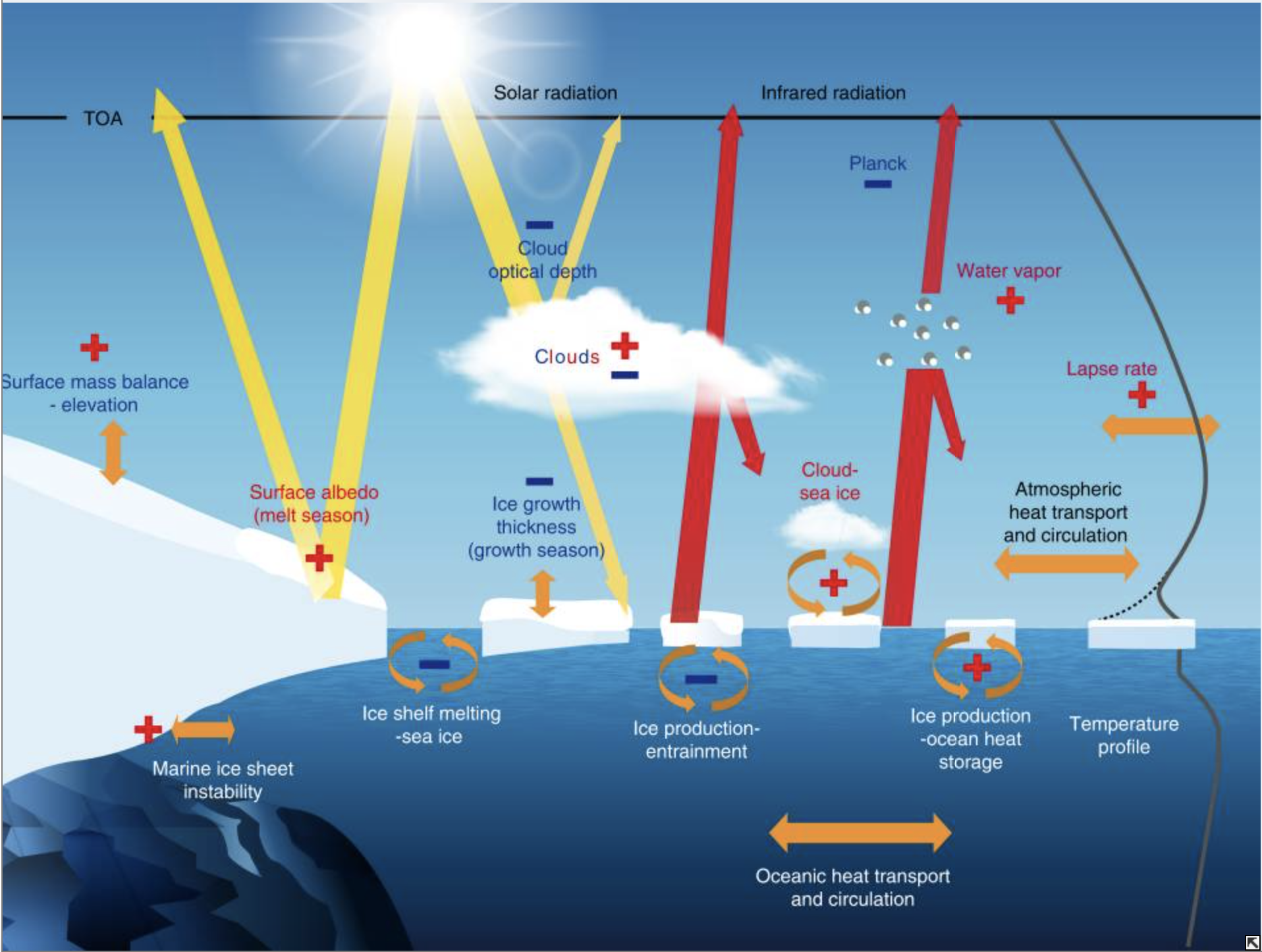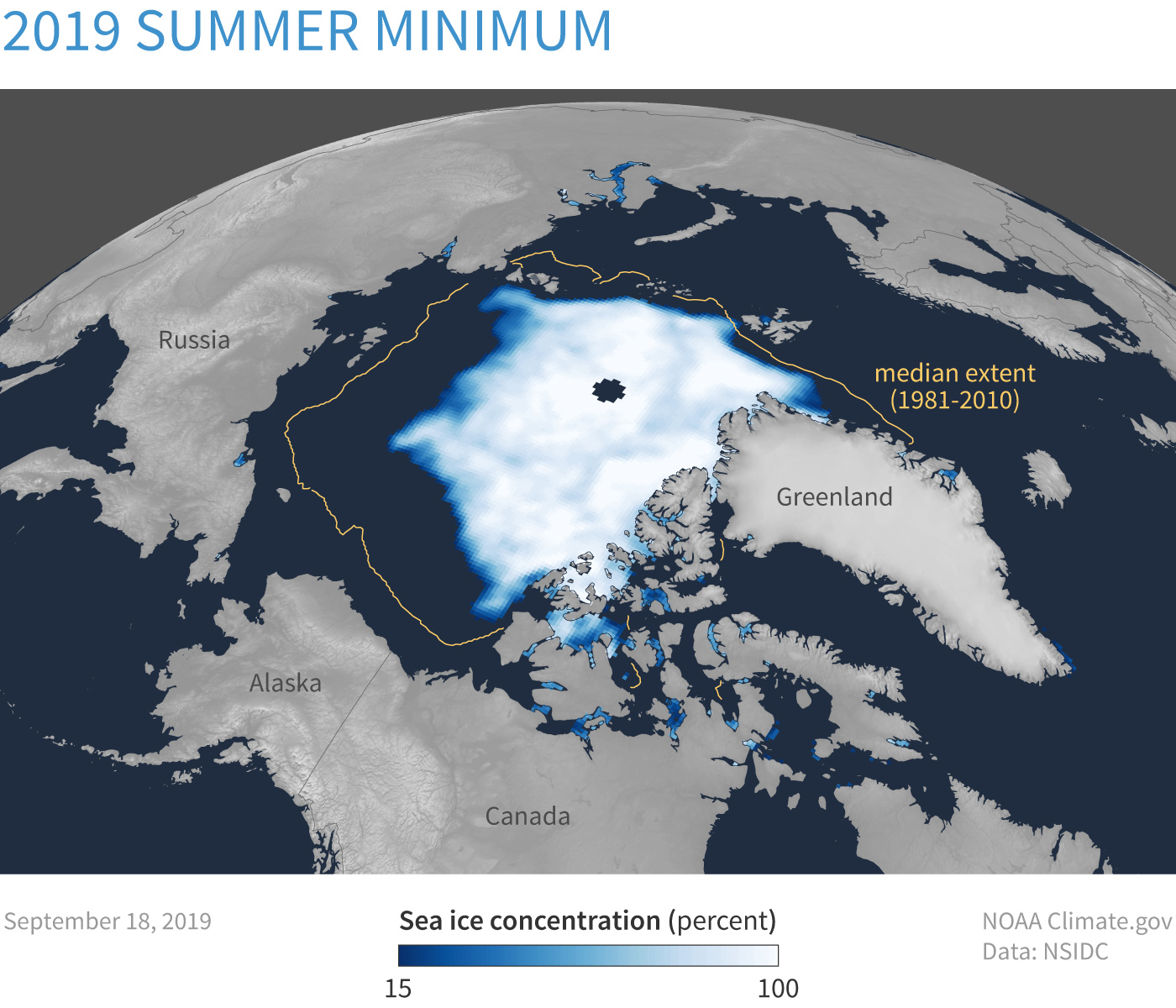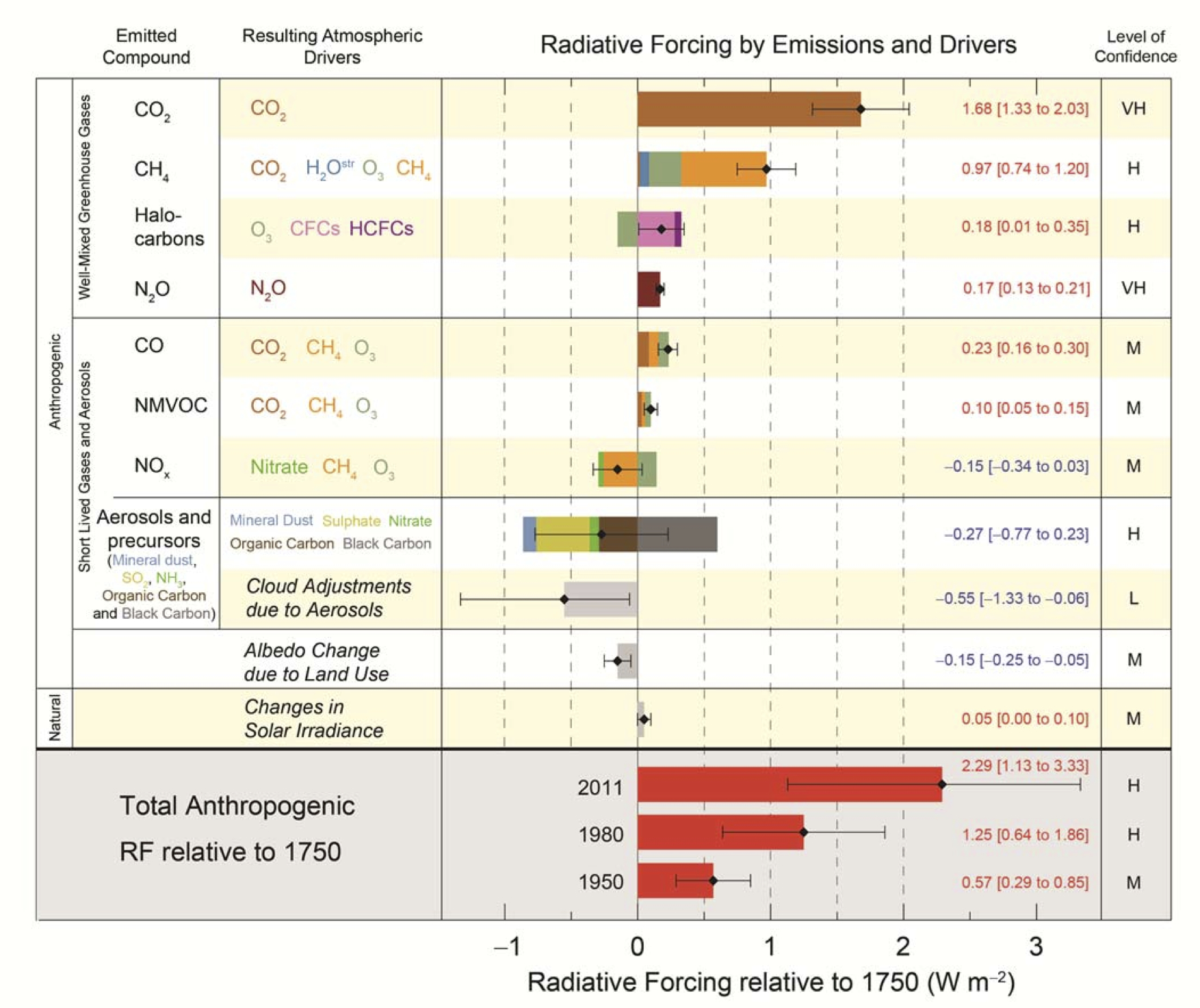Cause of Arctic Amplification¶
Arctic Amplification is a prominent feature of global warming!
What is Arctic Amplification (AA)?¶
Near-surface of the Northern Hemisphere high latitudes are warming at rates double that of lower latitudes (Cohen et al., 2014).

Fig. 7 Trends in mean surface air temperature over the period 1960 to 2019. The fact that Arctic warms more than the rest of the globe in the past decades signatures the Arctic amplification. Credit: NASA GISS.¶
Why AA is important?¶
Local impacts on human dimension
Local impacts on nature system
Remote impacts
Quantitative definition of AA¶
Arctic amplification factor (AAF): Arctic surface air temperature change divided by global surface air temperature change.
Arctic amplification efficacy (AAE): AAF\(_{XX}\) divided by AAF\(_{CO_2}\), where \(XX\) is the forcing agent.
AA in Observational Records and Models¶
Paleoclimate records
Present-day observations
General circulation model
State-of-the-art climate model and future projection
AA Structure¶
AA has distinct seasonal and meridional structures.
Physical Mechanisms Causing AA¶
Climate Forcing¶
Greenhouse gases. For example: carbon doxide, ozone-depleting substances, methane.
Aerosols
Solar irradiance
Climate forcing details can impact the magnitude of AA (Stuecker et al. 2019)
Climate Feedbacks¶
A thorough review of these feedbacks’ contributions to Arctic warming can be seen in Goosse et al. 2018. We will go through each feedback in class.
Temperature feedbacks:
Planck feedback
Lapse-rate feedback
Surface albedo feedback
Water vapor feedback
Cloud feedback
Other feedbacks:
Northward shift of boreal forest and overall greening of the Arctic
Large evaporation increases in low latitudes
Oceanic heat fluxes in Arctic Ocean

Fig. 9 A schematic of some important radiative and non-radiative feedbacks in polar regions involving the atmosphere, the ocean, sea ice and ice sheets. Source: Goosse et al. 2018.¶
Poleward Energy Transport¶
Atmospheric transport:
Dry static energy
Moiste static energy
Oceanic transport
Circulation anomalies
Heat anomalies
Remote forcing from tropics?
Timescale affects the portion of atmospheric and oceanic heat transports

